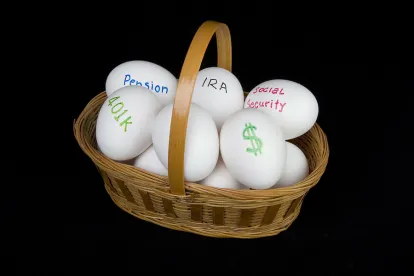As part of the recent tax reform legislation, Congress created a new program to incentivize private investment in certain low-income communities. The program allows taxpayers to defer and reduce the recognition of capital gain if the taxpayer reinvests all or a portion the capital gain proceeds in a “Qualified Opportunity Fund.”
A Qualified Opportunity Fund must invest at least 90% of its assets in certain qualifying businesses or property located in a “Qualified Opportunity Zone.” The governor of each state may designate up to 25% of the state’s qualifying low-income census tracts as Qualified Opportunity Zones.
There are three primary benefits to a taxpayer that reinvests capital gain proceeds in a Qualified Opportunity Fund:
1. Deferral: the taxpayer does not have to pay capital gain tax until the earlier of the date that the taxpayer sells its interest in the Qualified Opportunity Fund or December 31, 2026.
2. Capital Gain Reduction: if the taxpayer holds its interest in the Qualified Opportunity Fund for at least 5 years, 10% of the original capital gain will be eliminated, and if the taxpayer holds its interest in the fund for at least 7 years, an additional 5% (for a total of 15%) of the original capital gain will be eliminated. It is not clear how these rules apply if the holding period straddles December 31, 2026, but it appears that recognition is still required on December 31, 2026 (unless Congress decides to extend such date).
3. Appreciation Exclusion: if the taxpayer holds its interest in the Qualified Opportunity Fund for at least 10 years, the taxpayer will not be taxed on the appreciation in the Qualified Opportunity Fund (but the taxpayer should still owe tax on its original capital gain, which may be discounted as described herein).
Example
Assume a taxpayer owns stock with a basis of $20,000 and sells the stock in 2018 for $120,000. Ordinarily, the taxpayer would recognize $100,000 of capital gain in 2018. However, under the new program, the taxpayer may defer this gain and eliminate tax on future appreciation by investing the $100,000 capital gain in a Qualified Opportunity Fund within 180 days of the sale. The following chart summarizes the taxpayer’s capital gain assuming it sells its interest in the fund for $150,000 after 2, 5, 7, and 10 years:
| Holding Period of Fund | Gain from Original Capital Asset | Gain from Fund Appreciation |
| 2 Years | $100,000* | $50,000 |
| 5 Years | $90,000 | $50,000 |
| 7 Years | $85,000 | $50,000 |
| 10 Years | $85,000 | $0 |
* No capital gain is eliminated, but the capital gain is deferred for 2 years.
Unanswered Questions
Assuming the taxpayer invests in a Qualified Opportunity Fund before 2020, the 7-year holding period will be satisfied before December 31, 2026, and the taxpayer should only recognize 85% of the original capital gain on such date (assuming the taxpayer has not previously sold its interest). However, it is not clear what happens if a taxpayer invests in a Qualified Opportunity Zone after 2019. For example, if a taxpayer invests in a Qualified Opportunity Zone in 2022, then on December 31, 2026, neither the 5-year or 7-year holding periods will be satisfied, and the taxpayer will be required to recognize the entire amount of the original capital gain on such date. Presumably, the taxpayer would still receive the 10% or 15% basis step-up when the 5-year and 7-year holding periods are satisfied, which would allow the taxpayer to receive the capital gain discount against future appreciation upon an eventual sale of the Qualified Opportunity Fund. However, if the taxpayer holds the interest for 10 years, the basis is stepped up to the fund’s fair market value on the date of the sale, which would seem to make the 15% capital gain reduction irrelevant.
Accordingly, for investments held for at least 10 years, (i) an investment made before 2020 would receive the benefit of both the original capital gain 15% discount and the Qualified Opportunity Fund appreciation forgiveness, (ii) an investment made in 2020 or 2021 would receive the 10% discount and the appreciation forgiveness (but not the 15% discount), and (iii) an investment made in 2022 or later would only receive the appreciation forgiveness.
It is not clear if these results were intended by Congress, or if modifications to the program will be made to provide clarity or eliminate these discrepancies. Regardless, this new program will provide a number of tax benefits to investors and direct much needed capital to low-income communities. Please let us know if you have any questions or would like to discuss a potential investment in a Qualified Opportunity Fund or the receipt of a potential investment from a Qualified Opportunity Fund. The statutory language for the program can be found here.






 />i
/>i

